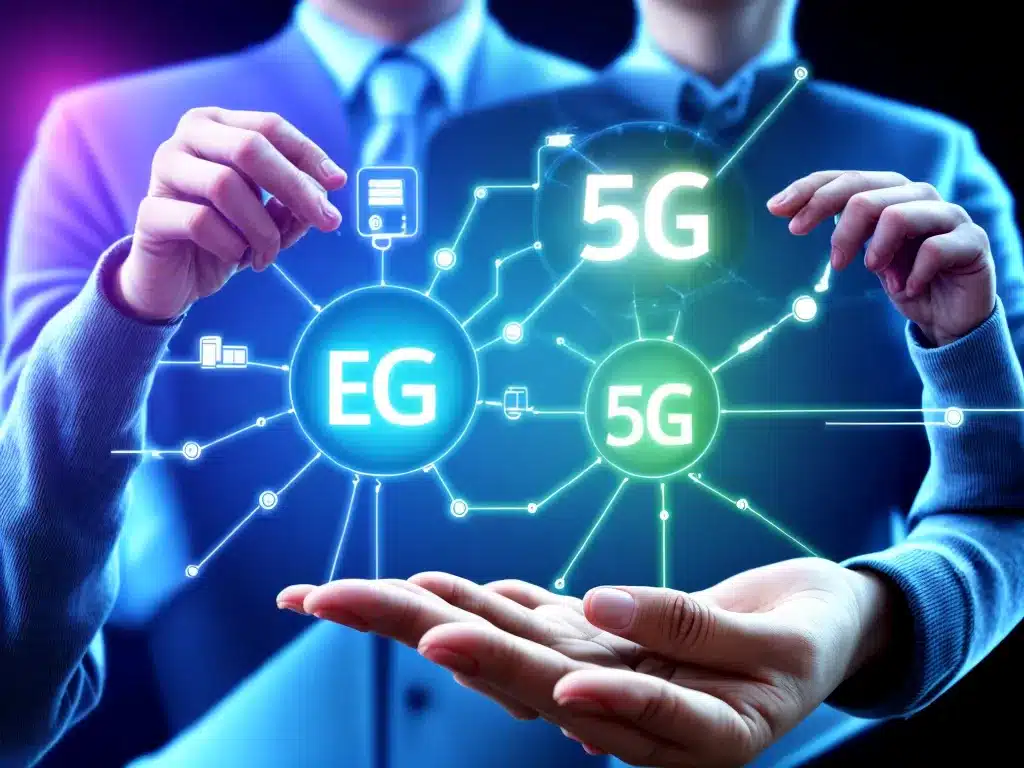
How 5G Will Unlock the Next Phase of IoT Innovation
Introduction
The Internet of Things (IoT) has transformed the way we live and work by connecting people, processes, data, and things in unprecedented ways. As exciting as the current implementations are, the next evolution of IoT enabled by 5G has the potential to be truly revolutionary. In this article, I will explore how the ultra-fast speeds, massive device density, and low latency of 5G networks will catalyze innovation across IoT applications and industries. My goal is to provide a comprehensive look at how 5G will shape the future of IoT and the profound impacts it can have on our lives.
Enabling Technologies of 5G for IoT
To understand how 5G will transform IoT, it is important to first understand the core capabilities 5G brings to the table:
Ultra-Fast Speeds
- 5G delivers exponentially faster speeds compared to 4G, with peak throughput rates up to 20 Gbps. This allows for near real-time connectivity between IoT devices.
Massive Device Density
- 5G supports up to 1 million device connections per square kilometer. This enables massive scale for IoT deployments across smart cities, factories, and homes.
Ultra-Low Latency
- 5G brings latencies down to 1-10 milliseconds, 100x faster than 4G. This enables real-time control and automation for mission critical IoT applications.
With this powerful combination of speed, scale, and responsiveness, 5G delivers the reliable, high-performance connectivity needed to realize the full potential of IoT.
Key IoT Applications Enabled by 5G
Many IoT applications that were impractical or constrained on 4G networks will become broadly viable on 5G. Here are some of the key areas where we can expect to see massive innovation:
Smart Cities
-
Autonomous Vehicles – 5G enables vehicles to make time-sensitive decisions and navigate safely through dense urban environments.
-
Smart Infrastructure – 5G allows for large-scale deployment of sensors to monitor infrastructure, transportation, utilities, and the environment in real-time.
-
Public Safety – First responders can leverage 5G’s speed and low latency to access critical data in emergency situations.
Industrial IoT
-
Smart Factories – 5G supports time-sensitive control of industrial robots, and collection of massive amounts of sensor data for analytics.
-
Remote Operation – Remote operation of machinery and vehicles is made practical with 5G’s nearly instantaneous communication.
-
Predictive Maintenance – Vibrational sensors on industrial equipment paired with real-time analytics can help predict maintenance needs before breakdowns occur.
Healthcare
-
Telemedicine – 5G enables high-definition video calls, remote scanning/diagnostics, and real-time robot-assisted procedures.
-
Wearables – Medical wearables can continuously track vitals and analyze health data in real-time over 5G.
-
Precision Medicine – Healthcare providers can leverage real-world data from patients and IoT devices to provide personalized care.
Overcoming Key Challenges to Unlock 5G + IoT Potential
While the promise of 5G for IoT is exciting, there are some key challenges that need to be addressed:
-
Infrastructure Buildout – 5G requires dense infrastructure of small cell sites. Significant investment and time will be needed for broad deployment.
-
Energy Consumption – The proliferation of connected IoT devices could explode energy needs. Innovations in low power networking will be vital.
-
Interoperability & Standardization – With massive device scale, ensuring different IoT systems can communicate will be crucial for end-to-end solutions.
-
Security – 5G’s expanded attack surface requires robust cybersecurity measures to protect privacy and ensure reliability.
-
Ecosystem Collaboration – Realizing the full potential will require coordination across telecoms, cloud providers, silicon vendors, governments, and industry.
The Road Ahead
We are still in the early stages of understanding and exploring how 5G will elevate IoT to the next level. But the capabilities 5G unlocks across speed, scale, and responsiveness point to a future of incredible innovation across consumers, enterprises, industries, cities, and society as a whole. There are challenges to overcome, but the possibilities are endless. As 5G rollout accelerates over the next decade, I am excited to see breakthrough IoT applications emerge that can profoundly improve our lives. The future of connectivity is bright, and 5G will power the next phase of IoT innovation.












